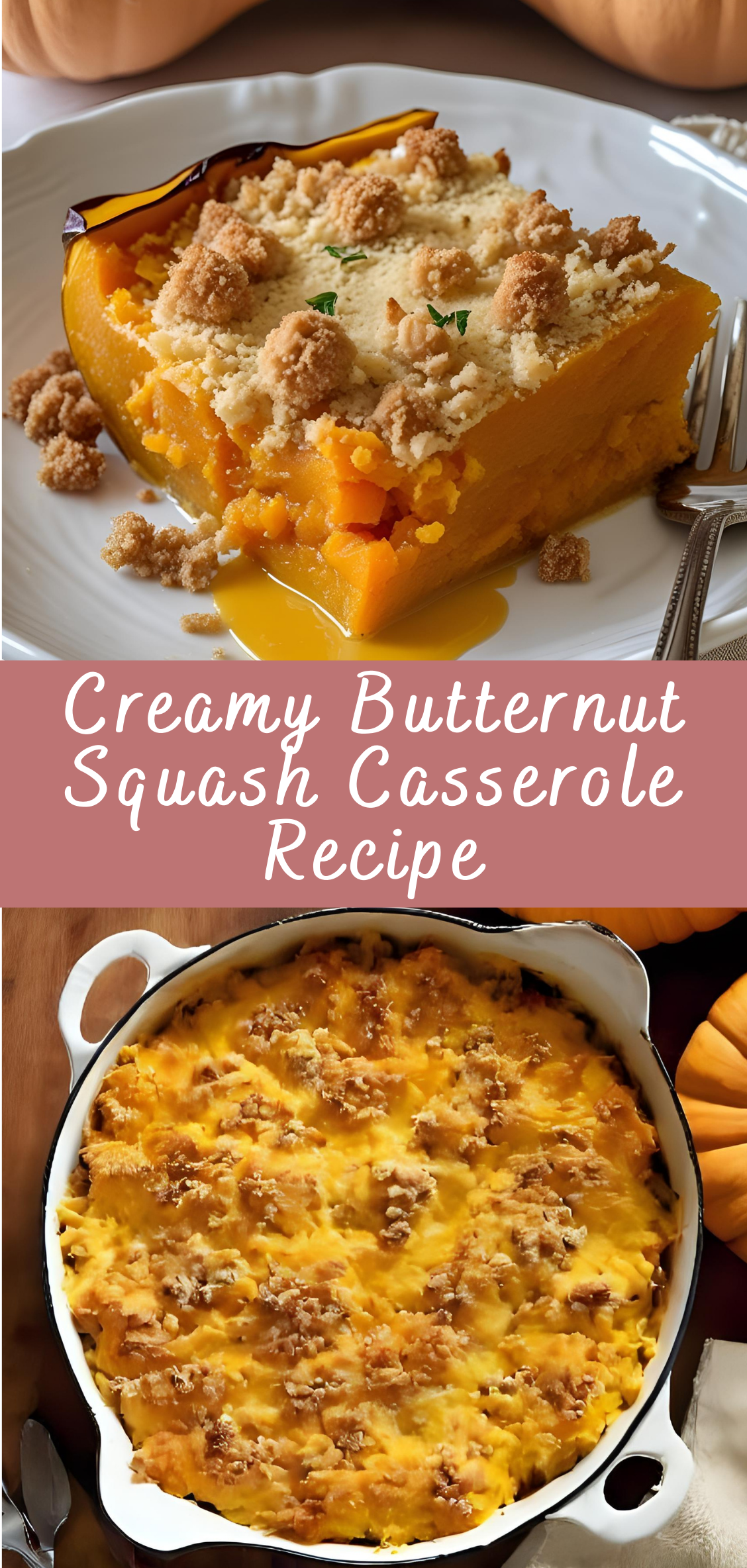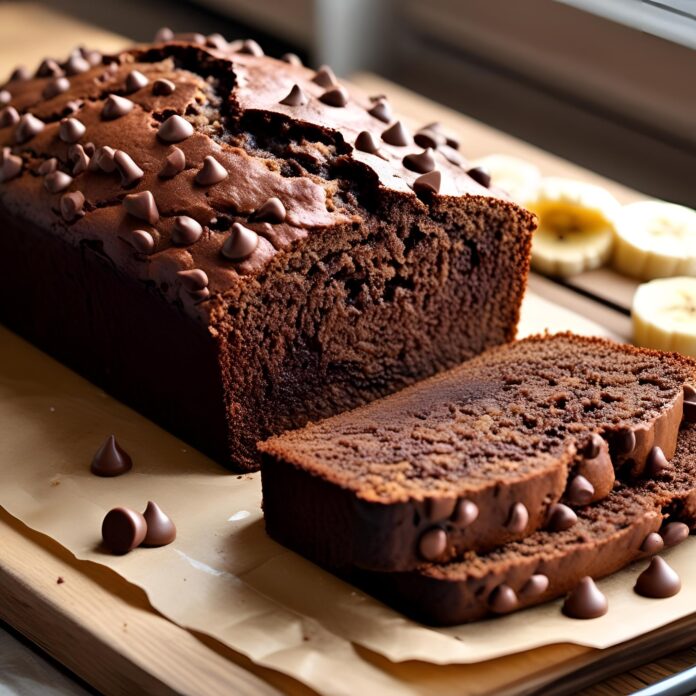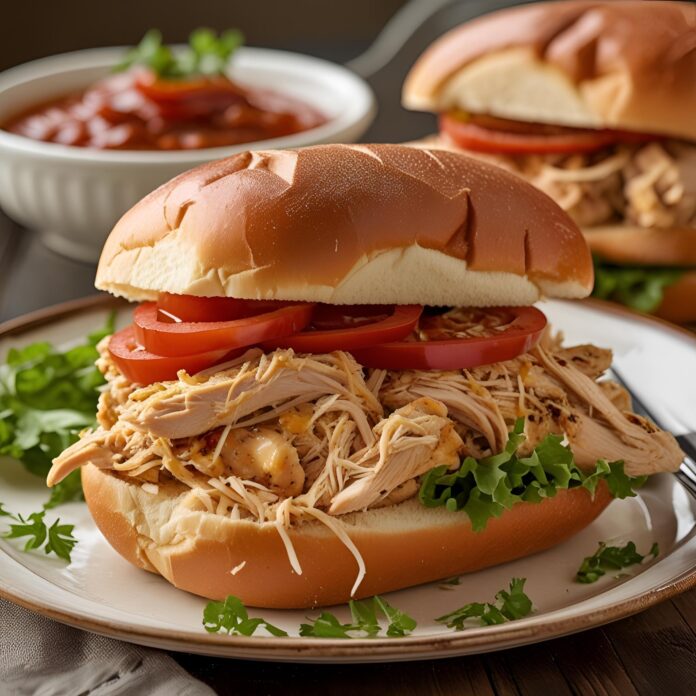Creamy Butternut Squash Casserole Recipe
Few dishes capture the soul of comfort food quite like a casserole. Warm, filling, and endlessly adaptable, casseroles have been a cornerstone of home cooking for generations. But when the ingredients are elevated—when a dish transcends the standard expectations and becomes something elegant yet accessible—you get something like this: the Creamy Butternut Squash Casserole.

This recipe is more than just a hearty side or seasonal main. It’s a celebration of autumn flavors, a tribute to the buttery richness of squash, and a masterclass in texture and balance. At its core, it is built on the natural sweetness and velvety texture of butternut squash, enhanced by a rich, savory cream base, aromatic herbs, and just the right amount of cheese and crunch. Whether you’re preparing a weeknight dinner, planning a holiday spread, or simply craving something cozy, this dish delivers.
The casserole balances sophistication and simplicity. On one hand, it’s rustic—perfect for spooning onto a plate alongside roasted meats or leafy greens. On the other hand, it’s refined enough to serve at a dinner party or on Thanksgiving Day. It’s the kind of dish that doesn’t try too hard to impress, yet always earns compliments. And like the best comfort foods, it tastes like home.
Why Butternut Squash?
Butternut squash is a marvel of versatility. With its smooth, dense flesh and mild, nutty flavor, it holds up beautifully in both sweet and savory preparations. When roasted or steamed, it becomes soft and slightly caramelized, bringing out its natural sugars. It blends effortlessly into purees, soups, gratins, and casseroles, offering a rich, golden hue and a subtle earthiness.
What makes butternut squash particularly suitable for this casserole is its consistency. It can be mashed or sliced, cubed or whipped, layered or folded. In this recipe, it’s used as the base and the star—its texture forming the creamy body of the dish, its flavor carrying the warmth and sweetness that contrasts beautifully with herbs, cheese, and a crispy topping.
Furthermore, butternut squash is nutritious. It’s packed with vitamins A and C, fiber, and antioxidants. It’s a vegetable that doesn’t ask you to compromise on health to achieve indulgence—it offers both.
Casseroles: A Culinary Tradition
The concept of the casserole has been around for centuries, long before the term itself became common in North America during the early 20th century. The idea is simple: bake a complete dish in one vessel. That idea has taken countless forms—from layered French gratins to Middle Eastern stews baked in clay pots to the creamy, cheese-laden dishes many associate with holiday tables in the United States.
What unifies all casseroles is their functionality. They’re meant to be easy to assemble, satisfying to eat, and capable of feeding a crowd. In this way, a casserole isn’t just a dish—it’s a solution. It’s what you make when guests are coming over, when you’re cooking ahead for the week, or when you want to bring something substantial to a gathering. The creamy butternut squash casserole fits all of these roles beautifully.
Yet despite its simplicity, this dish doesn’t settle for ordinary. The layers of flavor—from roasted squash to garlic and sage, from cream to parmesan—create a profile that’s rich but balanced, indulgent but not overpowering. It’s the kind of comfort food that makes you close your eyes when you take a bite, even if you’re just eating it at your kitchen counter in the middle of a busy week.
Creamy Without Being Heavy
Many creamy casseroles rely on processed ingredients—condensed soups, pre-shredded cheese, or artificial thickeners—to get their signature texture. This recipe takes a different path. The creaminess here comes from real ingredients: heavy cream or half-and-half, a touch of butter, and the starches naturally released by the squash during cooking. This results in a sauce that’s velvety and luxurious but not overly rich.
The texture of the casserole is carefully crafted to be satisfying without feeling heavy. The top layer, typically finished with a golden breadcrumb or nut topping, adds crunch and contrast, making each bite multidimensional. And the herbs—fresh thyme, sage, or rosemary—cut through the richness with bright, aromatic lift.
A Dish for Every Occasion
While this casserole is particularly well-suited for fall and winter, it isn’t confined to those seasons. It makes a stunning side for Thanksgiving, Christmas, or Sunday roast dinners. It pairs wonderfully with poultry, pork, beef, or vegetarian mains. It can be doubled for larger gatherings or portioned out for meal prep. And perhaps most importantly, it reheats beautifully—often tasting even better the next day as the flavors continue to develop.
From casual family meals to formal holiday feasts, the creamy butternut squash casserole is a versatile favorite. It’s a recipe you’ll return to again and again, not just because it’s easy or delicious (though it is both), but because it offers the kind of warmth and nourishment that good food always should.
Detailed Instructions: How to Make Creamy Butternut Squash Casserole
Step 1: Gather and Prepare Your Ingredients
Before you begin cooking, it’s essential to prep everything you need. This helps the process go smoothly and reduces the chance of skipping an ingredient or step.
Here’s what you’ll need:
For the casserole base:
-
1 large butternut squash (about 2.5 to 3 lbs), peeled, seeded, and cubed
-
2 tablespoons olive oil or melted butter
-
Salt and freshly ground black pepper, to taste
For the cream sauce:
-
2 tablespoons unsalted butter
-
1 small yellow onion, finely diced
-
2–3 cloves garlic, minced
-
1 teaspoon chopped fresh sage (or ½ teaspoon dried)
-
½ teaspoon fresh thyme leaves (or ¼ teaspoon dried)
-
¼ teaspoon ground nutmeg (optional, but adds warmth)
-
2 tablespoons all-purpose flour
-
1 ¼ cups whole milk
-
½ cup heavy cream (or half-and-half)
-
½ cup freshly grated Parmesan cheese
-
½ cup shredded Gruyère or white cheddar cheese
-
Salt and pepper to taste
For the topping:
-
¾ cup fresh breadcrumbs or panko
-
2 tablespoons butter, melted
-
2 tablespoons grated Parmesan (optional)
-
2 tablespoons chopped pecans or walnuts (optional, for texture)
-
Fresh herbs for garnish (optional)
Step 2: Prepare the Butternut Squash
Butternut squash is the star of this dish, and how you prepare it affects both the texture and flavor of the final casserole.
How to peel and cube:
-
Trim both ends of the squash.
-
Using a vegetable peeler, remove the skin. You may need to peel it twice in some areas to remove the tough outer layer.
-
Slice the squash in half lengthwise. Scoop out the seeds with a spoon and discard or save for roasting.
-
Cut the flesh into 1-inch cubes.
Why this size matters:
Uniform 1-inch cubes cook evenly and strike the right balance between structure and softness. Too large, and the squash may not cook through completely; too small, and it may lose texture and become mushy in the casserole.
Step 3: Roast the Squash
Roasting develops deeper flavor through caramelization, and helps reduce water content—creating a casserole that’s creamy but not watery.
-
Preheat the oven to 400°F (200°C).
-
Spread the cubed squash in a single layer on a baking sheet lined with parchment paper or foil.
-
Drizzle with olive oil or melted butter, and season with salt and pepper.
-
Roast for 25–30 minutes, turning halfway through, until the squash is tender and lightly browned.
Tip: You can test doneness by piercing a cube with a fork—it should go in easily without falling apart.
Set the squash aside to cool slightly. You can choose to mash some of it later for a creamier texture, or leave all the cubes intact for a chunkier finish.
Step 4: Make the Cream Sauce
While the squash is roasting, it’s time to make the sauce that gives this casserole its rich, velvety finish.
-
In a medium saucepan, melt 2 tablespoons of butter over medium heat.
-
Add the finely chopped onion and cook for 3–5 minutes, stirring occasionally, until translucent and fragrant.
-
Stir in the garlic, sage, thyme, and nutmeg (if using). Cook for 1 minute, just until aromatic.
Build the roux:
-
Sprinkle in the flour and stir continuously for 1–2 minutes. This forms a roux that will thicken the sauce.
Add liquids slowly:
-
Gradually pour in the milk, whisking constantly to prevent lumps. Once incorporated, add the cream.
-
Continue cooking and whisking until the mixture begins to simmer and thicken—about 5–7 minutes.
Add cheese:
-
Reduce heat to low and stir in the Parmesan and Gruyère. Continue stirring until melted and smooth.
-
Taste and season with salt and pepper.
Note: The sauce should be creamy and pourable, but not overly thick. It will continue to thicken as it bakes with the squash.
Step 5: Assemble the Casserole
Now comes the fun part—bringing everything together.
-
Grease a 9×13-inch (or similar size) baking dish with butter or non-stick spray.
-
Add the roasted squash to the dish. For a mixed texture, mash about ⅓ of the squash with a fork and stir it in. This gives the casserole a creamy base while leaving chunks for bite.
-
Pour the cheese sauce evenly over the squash. Use a spatula or spoon to gently fold it in, making sure everything is coated.
-
Taste the combined mixture before baking and adjust seasoning if needed.
Step 6: Prepare the Topping
The topping adds necessary contrast to the creamy interior. You want something that adds crunch without overpowering.
-
In a small bowl, combine:
-
¾ cup breadcrumbs or panko
-
2 tablespoons melted butter
-
Optional: 2 tablespoons Parmesan and 2 tablespoons chopped nuts for flavor and crunch
-
-
Mix until the crumbs are well coated with butter.
-
Sprinkle the mixture evenly over the top of the casserole.
Tip: Use panko for a lighter, crispier topping; use fresh breadcrumbs for a softer, more traditional finish.
Step 7: Bake
-
Preheat the oven to 375°F (190°C) if not already hot.
-
Place the casserole dish on the center rack.
-
Bake uncovered for 25–30 minutes, or until the topping is golden brown and the casserole is bubbling at the edges.
Optional finishing step: For an extra crispy top, switch the oven to broil for the last 2–3 minutes. Watch carefully to prevent burning.
Step 8: Let It Rest
Once baked, remove the casserole from the oven and let it rest for 10–15 minutes before serving.
Why rest? This allows the sauce to settle and firm up slightly, making it easier to slice or scoop. It also helps meld the flavors, much like a good lasagna or baked pasta dish.
Step 9: Garnish and Serve
Before serving, you can add a final touch:
-
A sprinkle of fresh thyme or sage leaves
-
A small grating of Parmesan
-
A light drizzle of olive oil or browned butter (for special occasions)
This casserole is best served warm. It pairs beautifully with roasted meats (like chicken, turkey, or pork), leafy green salads, or other seasonal vegetables like green beans or Brussels sprouts.
Creamy Butternut Squash Casserole Recipe
Few dishes capture the soul of comfort food quite like a casserole. Warm, filling, and endlessly adaptable, casseroles have been a cornerstone of home cooking for generations. But when the ingredients are elevated—when a dish transcends the standard expectations and becomes something elegant yet accessible—you get something like this: the Creamy Butternut Squash Casserole.
Ingredients
- For the casserole:
- 1 medium butternut squash (about 2.5 to 3 lbs), peeled, seeded, and cubed
- 1 tbsp olive oil
- Salt & pepper, to taste
- 1/2 cup sour cream or Greek yogurt
- 1/2 cup whole milk or half-and-half
- 2 large eggs
- 1/2 tsp garlic powder
- 1/4 tsp ground nutmeg
- 1/4 tsp cayenne pepper (optional)
- 1/2 cup grated Parmesan cheese
- For the topping:
- 1/2 cup breadcrumbs (Panko or regular)
- 2 tbsp melted butter
- 1/4 cup grated Parmesan
- 2 tbsp chopped fresh parsley (optional, for garnish)
Instructions
- Preheat oven to 375°F (190°C). Grease a 9x9-inch or similar-size baking dish.
- Cook the squash:
Boil or steam cubed butternut squash until fork-tender (about 10–15 minutes). Drain well. - Mash or puree:
Transfer the cooked squash to a large bowl and mash until mostly smooth, or blend in a food processor for a creamier texture. - Make the creamy base:
Add sour cream, milk, eggs, garlic powder, nutmeg, cayenne (if using), Parmesan, salt, and pepper. Stir or blend until fully combined. - Transfer to baking dish:
Pour the mixture into the prepared casserole dish and smooth the top. - Prepare topping:
In a small bowl, mix breadcrumbs, melted butter, and Parmesan. Sprinkle evenly over the casserole. - Bake for 30–35 minutes, until the top is golden and the casserole is bubbling slightly.
- Garnish (optional):
Sprinkle with fresh parsley before serving.
Notes
- Make-Ahead: Assemble the casserole (without topping) a day in advance. Cover and refrigerate. Add topping just before baking.
- Dairy-Free Option: Use coconut cream or a dairy-free yogurt substitute and plant-based milk. Use nutritional yeast or vegan Parmesan.
- Flavor Boosters: Add a bit of sage, thyme, or caramelized onions for a deeper fall flavor.



